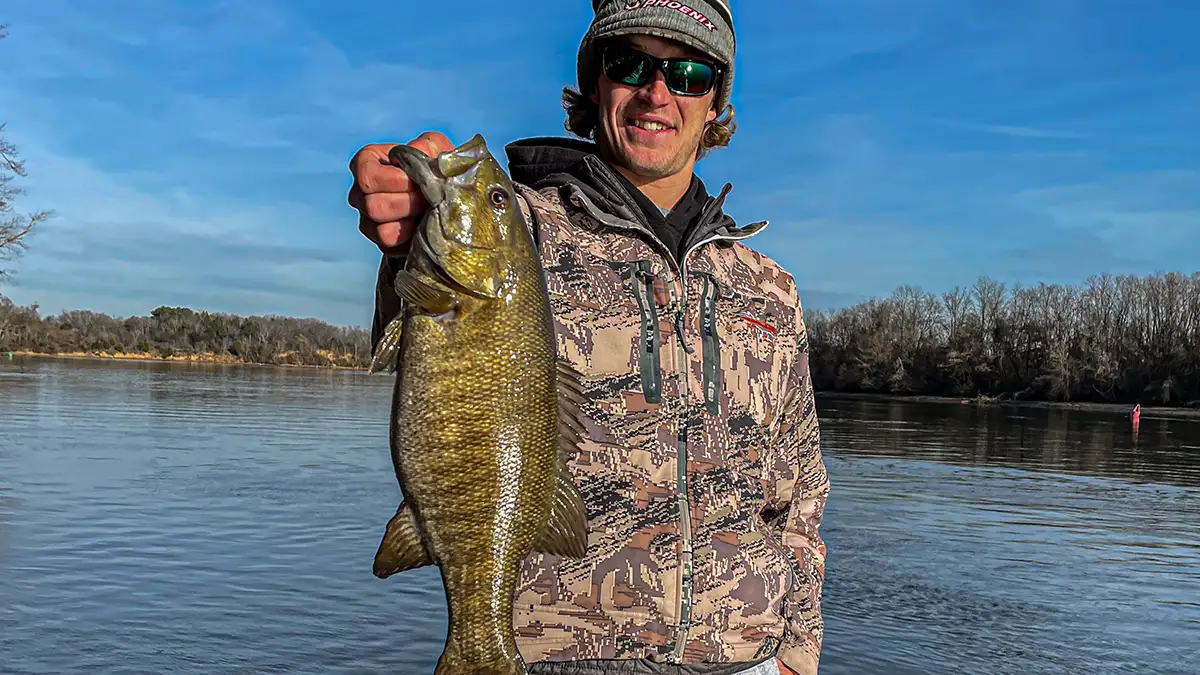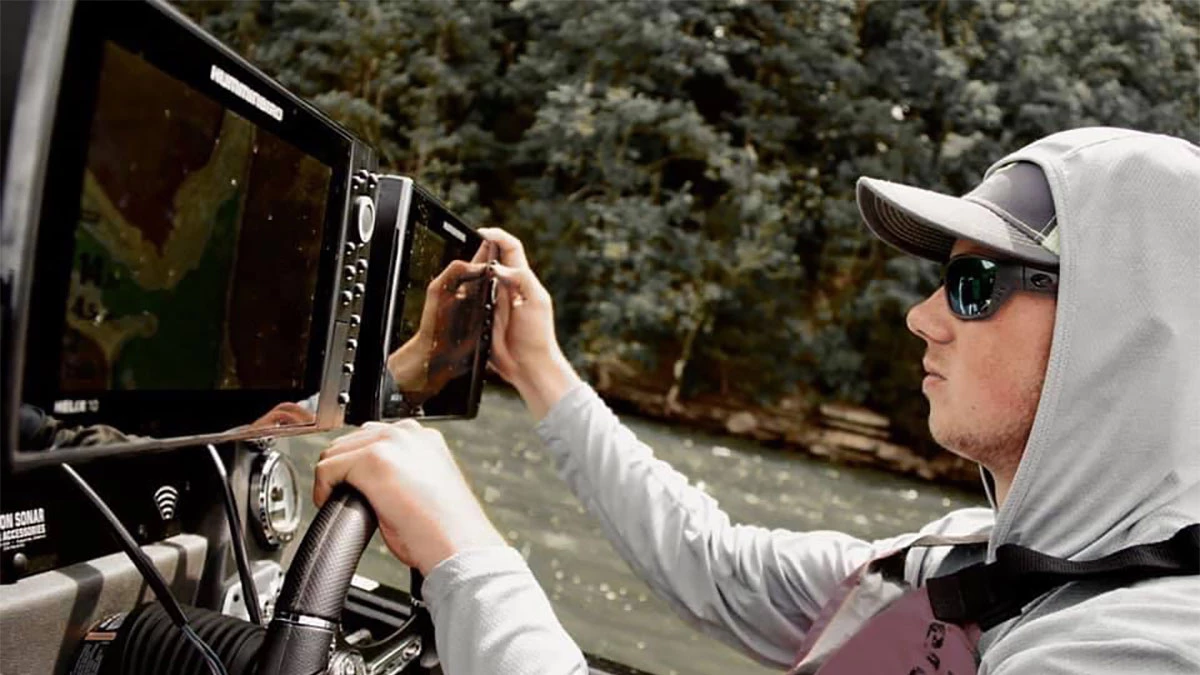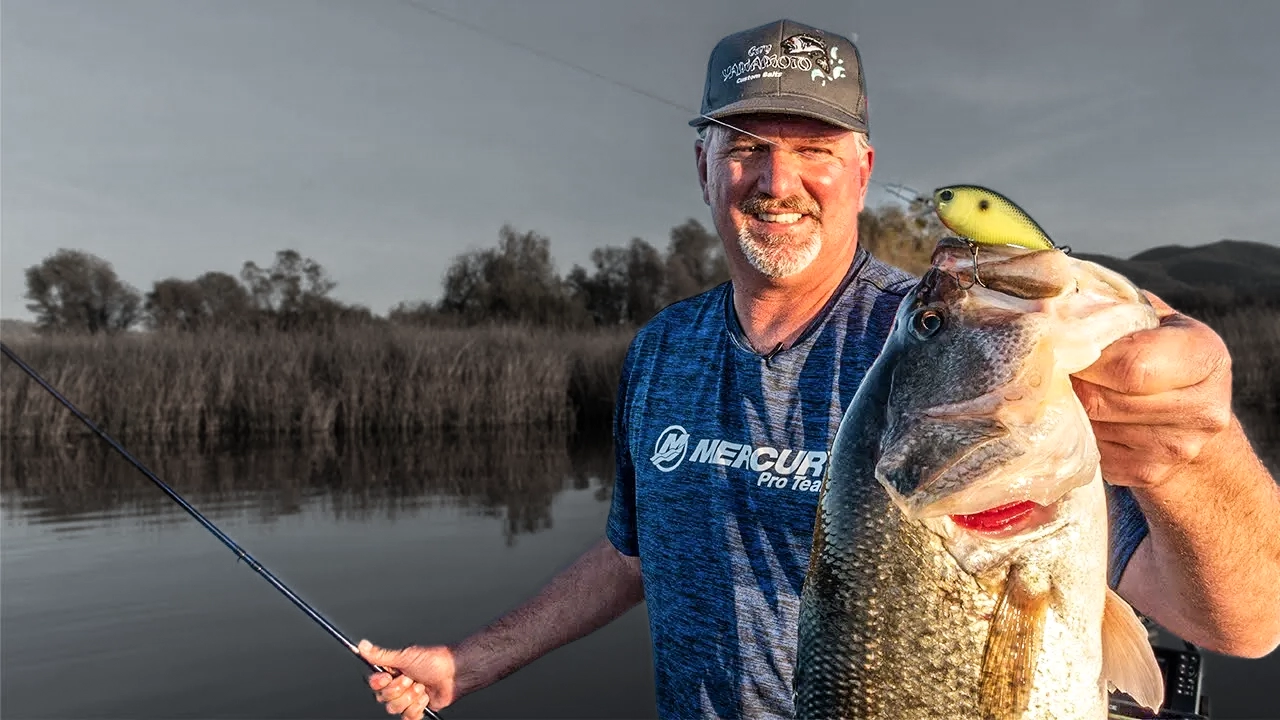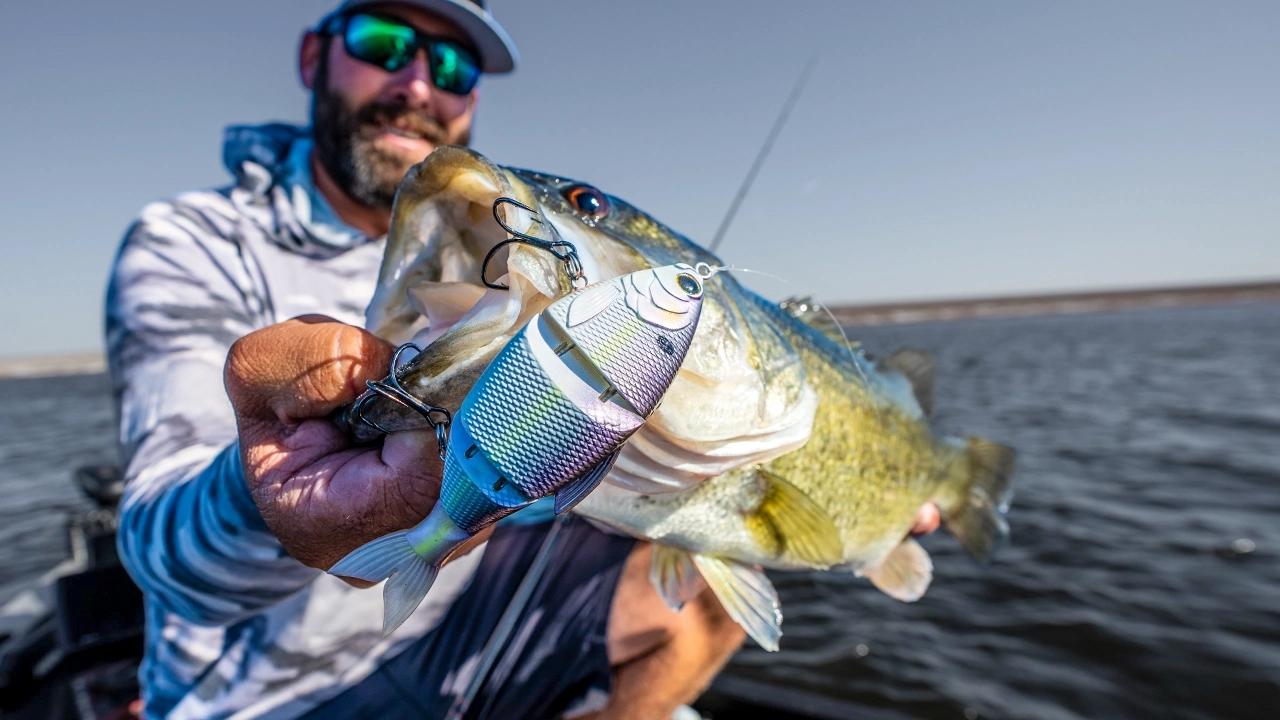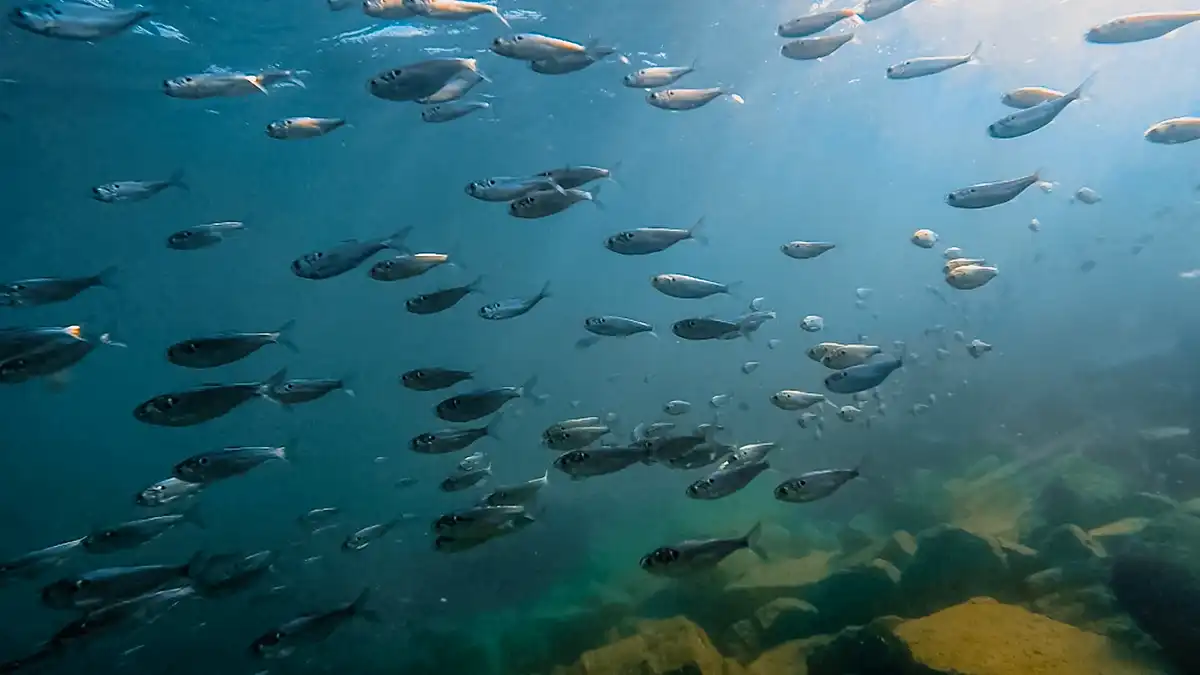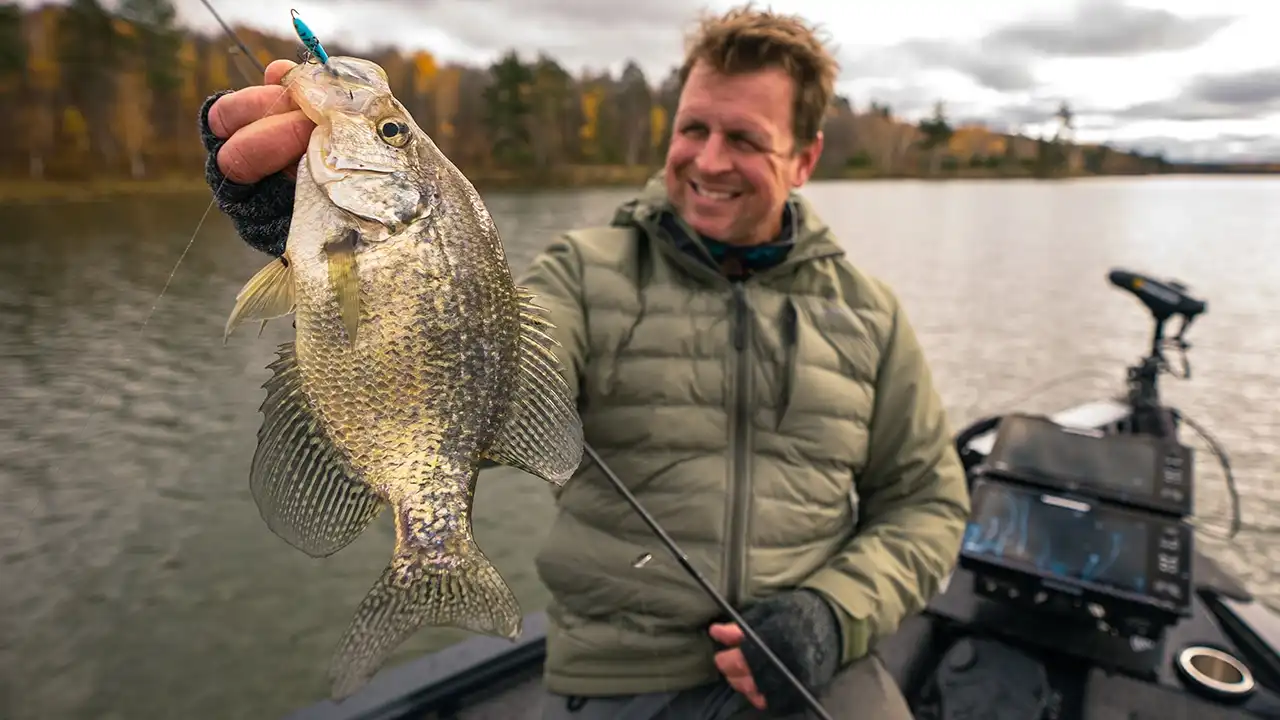The fall is historically a tough time to bass fish. This is due to fish being spread out and gorging on ample forage before the harsh winter months. Finding a large congregation of fish this time of year can be difficult, however, running a pattern based off current conditions is still a great way to catch fish. And some well learned fall flipping tips can produce when other techniques fail.
There are a plethora of different baits to throw when patterning fish throughout the fall, however, one technique I always keep honest is flipping. Flipping can efficiently dissect shallow water cover and produce a repeatable pattern. Finding these patterns can take time, but once you understand the importance of current, forage and covering water it becomes much more obtainable.
Five things to consider when flipping for bass in the fall would include the following:
- Current
- Forage
- Covering Water
- Patterns in Cover
- Lure Selection
CURRENT
Current is arguably the most important factor in having a successful day of flipping. On the majority of river systems, current can completely dictate fish behavior. On days where there is little current, fish will spread out in search of baitfish. When there is heavy current, however, fish are forced up against the bank and into slack water in order to avoid this fast moving water. This can position fish predictably to entice with a variety of flipping baits. Some of my favorite places to target during this scenario are current breaks as well as faces that receive a lot of current.
Bluff walls and channel swing banks are both great places to look for this current related flipping bite. Water often hits these banks the hardest creating the largest amount of current in the area. This causes these locations to be high percentage spots. While understanding current is important, how it moves forage is another crucial aspect in locating active fish.

FORAGE
During the fall transition bass aren’t focused on spawning. Instead, their sole focus is on feeding. This is why locating a high presence of baitfish is so important in fall fishing. This forage can be anything from shad to crawfish, but finding feeding fish is the main goal in locating this large congregation of forage.
Once you locate a congregation of baitfish, you need to match the hatch. I like to rotate between a variation of jig and Texas rig colors until I match the resident baitfish. One way to quickly figure this out is by checking to see if the fish spits up any bait. This can show you if they are eating crayfish, bluegill, shad or any other type of forage.
While you may catch a few fish in one area feeding on concentrations of bait, finding a large congregation of bass this time of year can be limited. This makes locating multiple areas with bait extremely crucial when looking for a pattern.

COVERING WATER
Covering water is one of the best ways to put a big limit of bass in your boat in the fall. While you often don’t catch a ton of fish, flipping up shallow can catch some of the biggest. Fall is a transitional period for bass which causes them to be constantly moving. Hitting a ton of places throughout the day produces when targeting nomadic fish.
While covering water is important, you must be sure to not skip over potential hiding spots. This is why I like to make repetitive casts at the same piece of cover. When fishing a laydown for example, don’t just make one flip at the end of the tree. Instead, make multiple flips insuring you hit every part of the tree. Changing your casting angle is another great way to get fish to react this time of year. This subtle change in presentation generates additional reaction bites that other anglers might miss.
PATTERNING COVER
Another effective technique for catching fall bass is patterning different types of shallow-water cover. Fish behavior changes constantly throughout the day, however, there are certain windows where you can capitalize on a repeatable pattern. One of the best ways to locate a pattern is by flipping shallow cover.
Fish tend to prefer similar types of cover throughout the day, so if you get bit on a specific spot you can likely get bit again on another similar location. I like to start by fishing a mix of different banks moving at a quick pace to efficiently cover water. Once I get a bite, I will start searching for more of that specific kind of cover. If that turns out to be a pattern, I will slow down and pick apart those types of cover more carefully. Once you find a productive pattern, dialing in the right bait is the final piece to flipping up big limits of bass in the fall.

CHOOSING THE RIGHT FLIPPING BAIT
I have used a number of different flipping baits over the last several years, however, there are three that I never leave home without. Those include a Texas-rigged Senko, beaver and a flipping jig. All three options are great for flipping, however, they each have their own specific attributes that make them better for specific scenarios.
I like to use a Senko when fishing around vegetation or lily pads. The streamlined profile of this bait allows it to slip through grass without getting fouled. One of my favorite options for this bait is the 5-inch Yamamoto Senko. A Texas rigged Senko is my go-to bait when flipping around vegetation in the fall.
I transition to a beaver style plastic when fishing shallow laydowns or other types of hard cover. This bait has a fairly weediness profile and is great for fishing around moderate amounts of cover. This bait also has a small profile, making it my go-to option when searching for lots of bites. One of my favorite baits to use for this application is the Berkley MaxScent Creature Hawg. This is considered my “all around” flipping bait and is a great option for fishing the majority of shallow water cover.
Lastly, one of my favorite lures to flip during the fall is a jig. This bait has a much larger profile than the Senko or the beaver, and generally catches a larger class of fish. This bait is also great for extremely heavy cover. Locations such as the hearts of trees or center of trash mats are all great locations to fish this lure. I also tend to vary my color selection based on the preferred forage. If I am unaware, I typically go with a generic bluegill color. One of my favorite flipping jigs for this scenario is the D & L Advantage Casting Jig.
Flipping throughout the fall can be a great way to catch a big limit of bass when fishing is tough. With the rise in popularity of electronics, it can be nice to go back to your roots and fish using your eyes and repeatable features. While this is considered an old technique, it has been a successful way to catch fall bass for many years, and will continue to produce for years to come.





